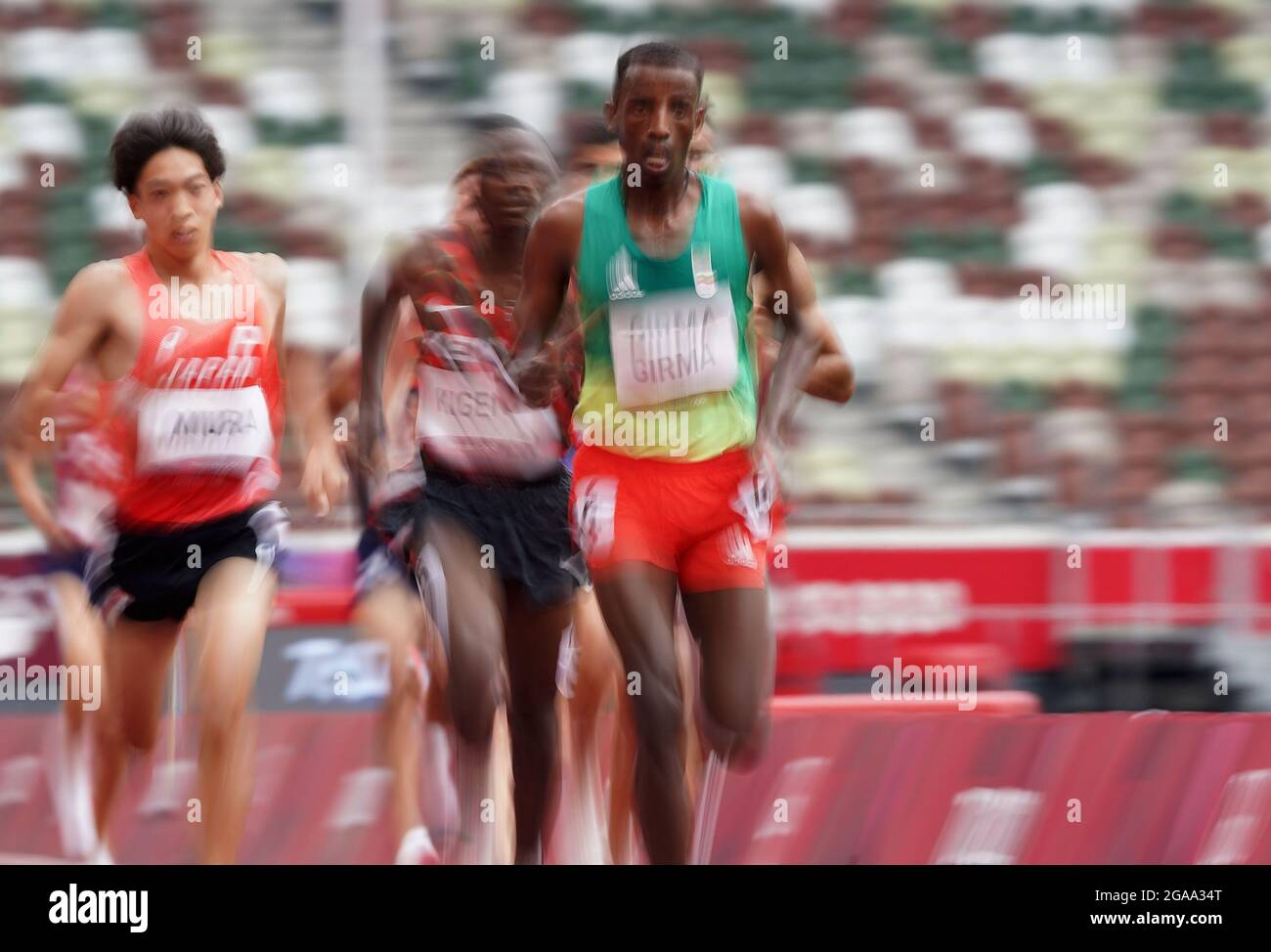The Girma Steeplechase Fall

The Girma Steeplechase Fall, a thrilling spectacle of equestrian prowess and daring, stands as a testament to the enduring legacy of steeplechase racing. Its roots delve deep into the annals of horse racing history, where it has evolved into a renowned event, captivating audiences with its blend of athleticism and strategy.
Origins and Evolution, Girma steeplechase fall
The Girma Steeplechase Fall traces its origins back to the early days of steeplechase racing, a discipline that emerged in Ireland in the 18th century. The event, initially known as the Girma Chase, was held on a course characterized by challenging natural obstacles, reflecting the rugged terrain of the Irish countryside. Over time, the Girma Steeplechase Fall evolved into a more formalized competition, with standardized rules and regulations governing the race. The event’s significance in the history of steeplechase racing lies in its contribution to the development of the discipline’s unique character and its role in shaping the standards of equestrian excellence.
Historical Context
The Girma Steeplechase Fall has witnessed a rich tapestry of history, marked by the exploits of legendary riders and the unfolding of memorable races. The event has been a stage for prominent riders, including the legendary jockey, John “Red” Redmond, who dominated the race in the early 20th century. His exceptional horsemanship and strategic acumen earned him widespread acclaim and cemented his place in the annals of steeplechase history. Notable races, such as the 1935 Girma Steeplechase Fall, where the filly “Lady Luck” defied expectations to claim victory, have become etched in the event’s legacy. These races, along with significant milestones, including the introduction of modern safety regulations, have shaped the Girma Steeplechase Fall into the prestigious event it is today.
Comparison to Other Steeplechase Events
The Girma Steeplechase Fall shares common elements with other major steeplechase events worldwide, such as the Grand National in England and the Cheltenham Gold Cup. These events feature challenging courses, demanding physical and mental endurance from both horse and rider. However, the Girma Steeplechase Fall distinguishes itself with its unique blend of tradition and innovation. The event maintains a strong connection to its historical roots, while embracing modern advancements in equestrian technology and safety protocols. The course at Girma is known for its challenging water jumps and undulating terrain, adding an element of unpredictability and excitement to the race. The Girma Steeplechase Fall, therefore, stands out as a unique and captivating event, attracting a global audience of horse racing enthusiasts.
The Challenges of the Girma Steeplechase Fall

The Girma Steeplechase Fall is renowned for its demanding course, presenting a unique set of challenges for both horse and rider. The course design, obstacles, and terrain, combined with the unpredictable nature of weather conditions, create a formidable test of skill, endurance, and courage.
Course Design and Obstacles
The Girma Steeplechase Fall course is designed to test the limits of horse and rider, featuring a combination of natural and man-made obstacles. The course is characterized by its undulating terrain, with steep inclines and descents that test the horse’s stamina and the rider’s balance.
The obstacles are strategically placed to challenge the horse’s jumping ability and the rider’s timing and precision. These obstacles include:
- Water Jumps: These obstacles require horses to jump into and out of water, testing their courage and ability to maintain their balance.
- Fences: The course features a variety of fences, ranging from low brush fences to high, imposing stone walls. These obstacles test the horse’s jumping technique and the rider’s ability to guide the horse over the fence with precision.
- Bunkers: These obstacles are designed to test the horse’s agility and the rider’s ability to navigate tight spaces. Bunkers are often located at the base of hills, forcing horses to change direction quickly and navigate a challenging terrain.
Weather Conditions
Weather conditions can significantly impact the Girma Steeplechase Fall, presenting a range of hazards and safety concerns. The event is held in the fall, when the weather can be unpredictable.
- Rain: Rain can make the course slippery and treacherous, increasing the risk of falls for both horse and rider.
- Wind: Strong winds can create challenging conditions for horses and riders, particularly when navigating obstacles. The wind can affect the horse’s balance and the rider’s ability to control the horse.
- Fog: Fog can reduce visibility, making it difficult for horses and riders to see the obstacles and navigate the course safely.
Strategies and Techniques
Experienced jockeys and trainers employ a variety of strategies and techniques to navigate the challenges of the Girma Steeplechase Fall. These strategies include:
- Horse Selection: Trainers carefully select horses that possess the necessary stamina, jumping ability, and temperament to handle the demands of the course. They look for horses with strong legs and feet, good jumping technique, and a calm disposition.
- Course Reconnaissance: Jockeys and trainers familiarize themselves with the course before the race, studying the obstacles and terrain to develop a strategy for navigating the course. They practice jumping the obstacles and refine their riding techniques.
- Pacing: Jockeys must pace their horses carefully throughout the race, conserving energy for the challenging obstacles and the final stretch. They must also be aware of the weather conditions and adjust their pacing strategy accordingly.
- Obstacle Navigation: Jockeys must be skilled in navigating the obstacles, using their experience and intuition to guide their horses over the fences and through the bunkers. They must also be able to anticipate the horse’s movements and react quickly to any unexpected events.
Girma steeplechase fall – Girma’s steeplechase fall was a tough one to watch, and it got me thinking about how common these falls are in the sport. It’s not just about the water jump, but also the pace and the high barriers, which makes a men’s steeplechase fall a real possibility.
Girma’s fall, though, was a real heartbreaker – you could see the disappointment in his face. It’s a reminder that even the best athletes can have a bad day.
Girma’s steeplechase fall was a shocking moment, a reminder of the inherent risks in the sport. It’s a stark contrast to the meticulous work of dental students at Quincy Hall, where they learn about the intricate structures of teeth and how to preserve them.
Quincy Hall teeth represent a legacy of dental education, a commitment to preventing injuries and preserving health, something that might have helped Girma avoid such a serious fall.